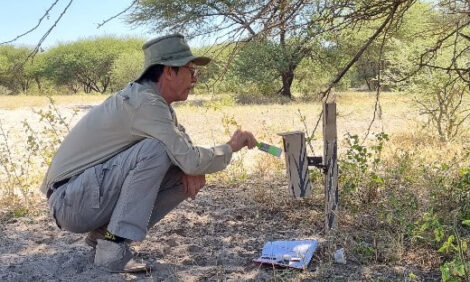



Infectious bursal disease virus isolates in Delmarva
The strains belong to genogroup A2B1, but with a unique "genetic signature"[Excerpts of a presentation by Sofia Egana-Labrin and colleagues at the University of Maryland, AviServe LLC, and the Maryland Department of Agriculture, during the 2024 annual conference of the American Association of Avian Pathologists]
The infectious bursal disease virus (IBDV) causes a major
immunosuppressive disease in chickens, leading to economic problems in the
poultry industry. The Delmarva (DMV) region is a major US poultry-producing
area, and while the control of IBDV relies on broiler and breeder vaccination,
immunized flocks may harbor subclinical infections with strains that continue
to evolve by antigenic drift and/or reassortment, which can lead to immune
escape and vaccine failure.
Several approaches were taken to assess IBDV field isolates.
First, we characterized field isolates currently circulating on the DMV based
on genome sequence data and structural modeling of the hypervariable region
(HVR) of the VP2 capsid gene, encoded by segment A, and the VP1 gene, encoded
by segment B.
Second, we evaluated the antigenic cross-reactivity of a panel
of recombinant chimeric IBDVs engineered by reverse genetics to define the
contribution HVR mutations make to immune escape.
Third, we provide up-to-date whole genome sequencing (WGS)
information regarding currently circulating strains. Finally, we evaluated the
presence of co-infection viruses in the field samples.
Bursal samples were obtained from commercial farms between
2018 and 2024, and, after RNA isolation, the samples were subject to
reverse-transcription polymerase chain reaction (RT-PCR), amplifying the HVR
and VP1 genes. Sanger sequencing revealed that all the strains belonged to
genogroup A2B1, typical of US variant strains, however, there was a unique
"genetic signature" in the HVR of some sequences, compared to the
prototype strain DE Variant E: S215N, I272V, S317R, G322E, and E323D, suggestive
of a novel IBDV variant.
This variant was present in only 16% of the samples in 2007 but increased in prevalence to over 57% during recent years, suggesting it might have a fitness advantage over other strains.
Additionally, we detected mutations in and around a key region
of VP1 that correlates with virulence (amino acids 145-147), with 25% of the
sequences having mutations at position 145, and 71% having mutations at
position 147. One isolate had two mutations: D146N and D147S, that have been
partially attributed to very virulent strains, suggesting there could be
differences in virulence between the strains.
Furthermore, 7% of the bursal samples were found to be
positive for avian reovirus, demonstrating that coinfection with multiple
immunosuppressive viruses occurs in the field.









